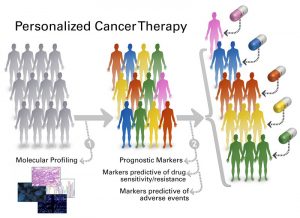BY BAR YOSEF| SQ ONLINE WRITER | SQ ONLINE (2016-17)
____________________________________________________________________________
Generation snowflake: noun informal, derogatory “the generation of people who became adults in the 2010s, viewed as being less resilient and more prone to taking offence than previous generations.” The term likely originates from the 1996 book and subsequent film Fight Club by Chuck Palahniuk. In the movie, a member of the anti-consumerist Project Mayhem says, “You are not a beautiful and unique snowflake. You are the same decaying organic matter as everyone, and we are all part of the same compost pile.” It turns out that the word “snowflake” can not only be used to deride millennials, but also to describe cancer tumors, which, in fact, are not “the same decaying organic matter,” but unique, proliferating organic matter.
New research suggests that every tumor has its own genetic profile and that rather than classifying cancers based on organ of origin, such as lung cancer and breast cancer, cancers should be classified based on their mutations. When combined with immunotherapy, this approach to cancer treatment is known as precision therapy. First, patients receive a comprehensive genomic profiling of their tumors. Then, they are given treatment based on genomic biomarkers.

At the Center for Personalized Cancer Therapy at the UCSD Moores Cancer Center, a Molecular Tumor Board composed of physicians and a wide range of scientists analyze each patient’s genomic tests and recommend treatments. The treatments are a combination of drugs that stimulate the immune system to attack cancer, as malignant tumors are able to grow and spread when the immune system does not recognize them as the threat that they are.

Dr. Razelle Kurzrock, the director of the Center for Personalized Cancer Therapy, said, “It doesn’t matter how good the drugs are, if you give them to the wrong patient, it’s not going to work.” Genomics began being used in cancer treatment in 2012 and has raised the efficacy of cancer drugs, which often have very low success rates. It was enabled by the Human Genome Project in 2000, which lowered the cost of sequencing from millions of dollars to about five thousand.
The fact that every tumor is a “snowflake” means that even within an individual, there are differences in the genomics of each tumor. Kurzrock is working on a Phase 1 Clinical Trial that is using liquid biopsy. This is when genomics is done on blood samples, which contain parts of different tumors so that the genetic profile is a combination of them. In the future, patients may be able to receive highly specific treatments that target each individual tumor. We may be on the precipice of curing cancer and the “less resilient” special snowflakes of our generation won’t need to fight it like previous generations have.
[hr gap=”10″]
Sources:
- https://www.collinsdictionary.com/dictionary/english/snowflake-generation
- https://op-talk.blogs.nytimes.com/2014/07/25/are-trophies-really-so-bad/?_r=0
- https://health.ucsd.edu/specialties/cancer/programs/personalized-therapy/Pages/tumor-board.aspx
- http://www.sandiegouniontribune.com/business/biotech/sdut-cancer-kurzrock-genomics-2013dec04-story.html
- https://www.ncbi.nlm.nih.gov/pubmed/27197177
- https://pct.mdanderson.org/
- http://www.pbs.org/newshour/art/12-stunning-snowflake-photos-you-wont-believe-were-taken-by-an-amateur-photographer/